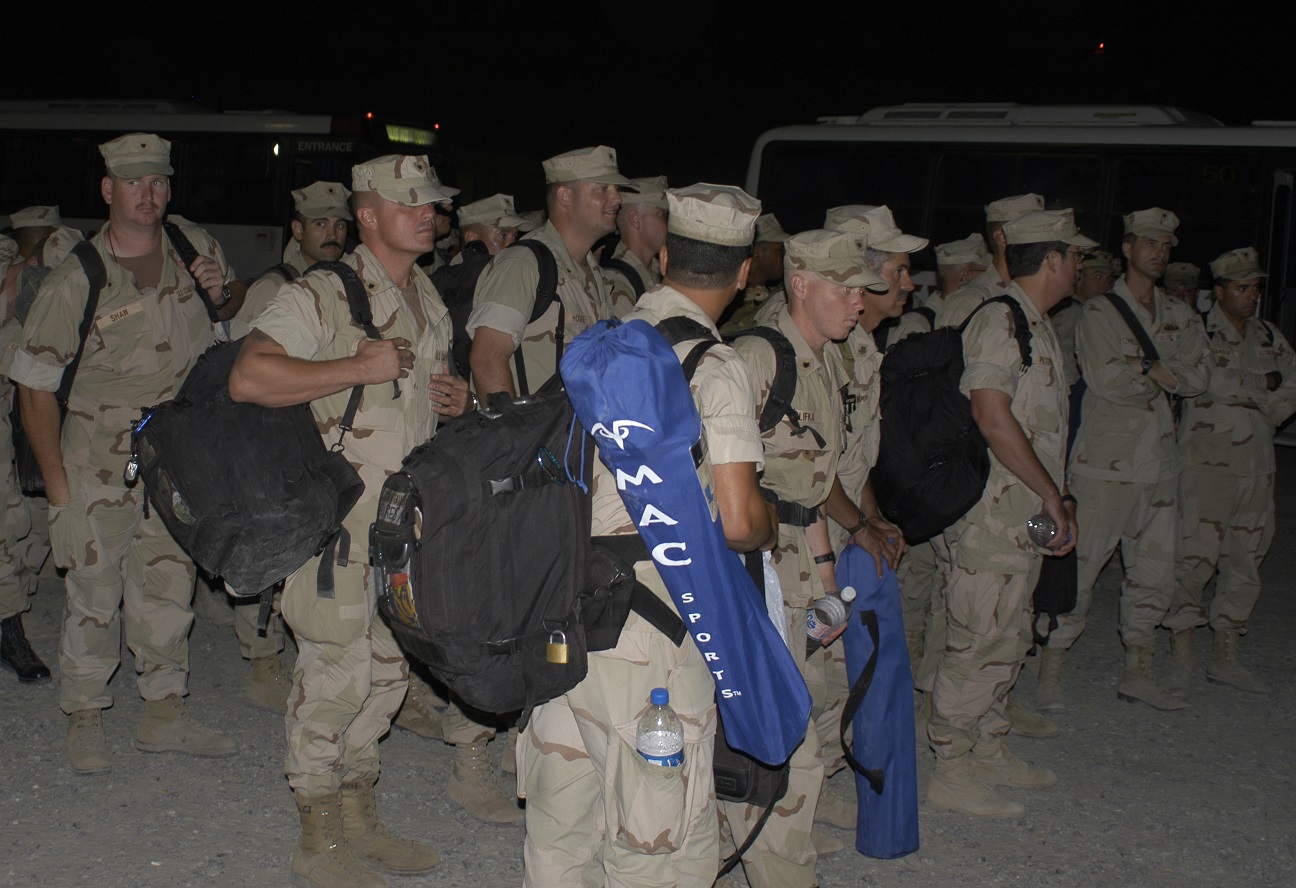 In 2003’s Operation Iraqi Freedom (OIF), Coast Guard vessels and land-based personnel brought many vital capabilities to the theater of operations, including port security units (PSUs).
In 2003’s Operation Iraqi Freedom (OIF), Coast Guard vessels and land-based personnel brought many vital capabilities to the theater of operations, including port security units (PSUs).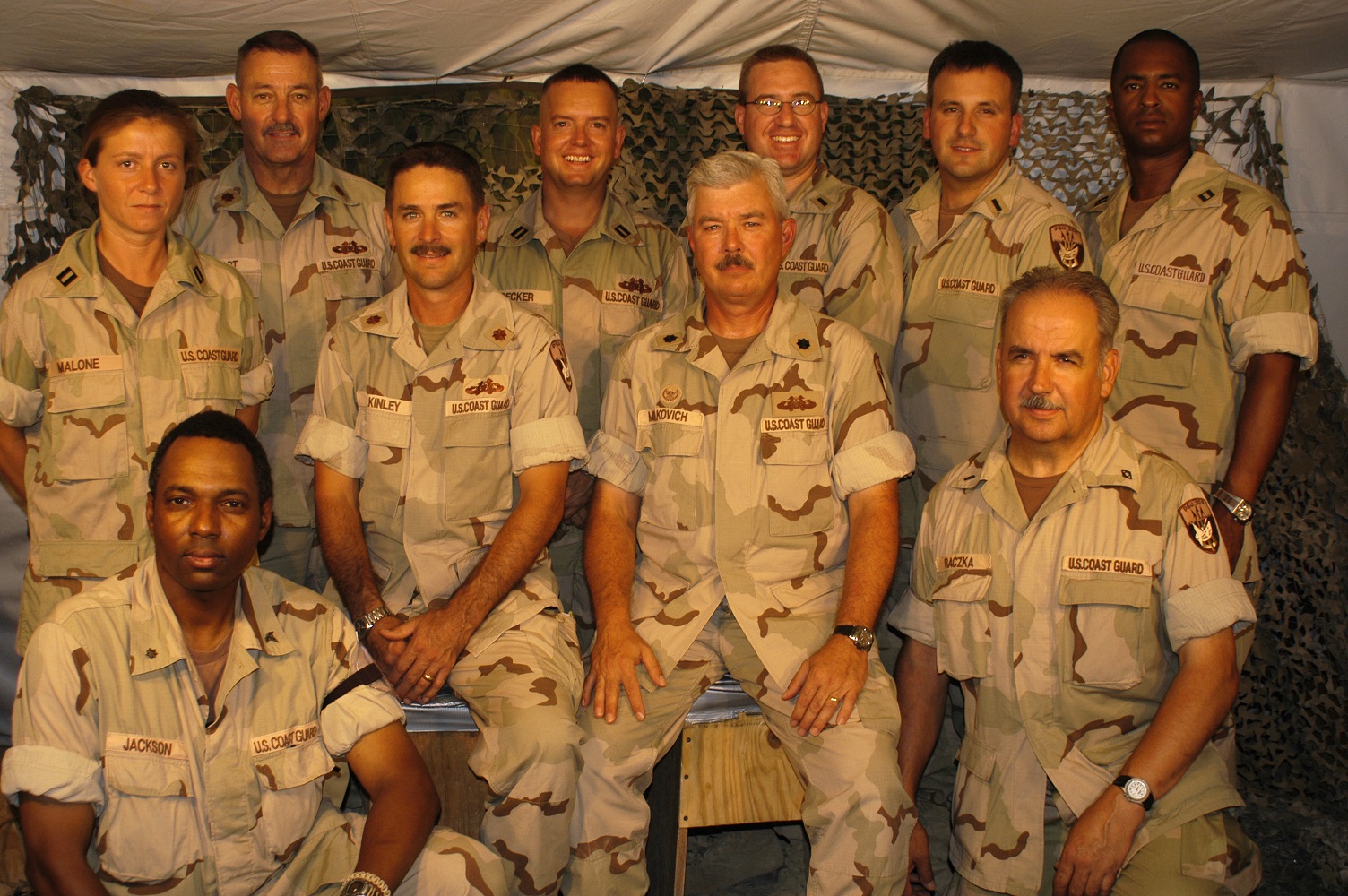
Prior to OIF, the Coast Guard supported six PSUs, with a mission of protecting American shipping and port facilities. All of the PSUs were kept busy since the terrorist attacks on September 11th. Port security units have a complement of up to half-a-dozen active duty staff and approximately 130 Coast Guard reserve members. Each unit comes equipped with 25-foot Boston Whaler-style motorboats armed with a 7.62mm machine gun. The PSUs in the Northern Persian Gulf would operate under the command of the Navy’s Naval Coast Warfare Group (NCWG) One, which controlled U.S. harbor defense and in-shore boat units.
The Coast Guard’s Pacific Area (PACAREA) units preparing to deploy to the Middle East included two Coast Guard PSUs. Shortly after Thanksgiving 2002, members of San Pedro, California’s PSU 311 learned they would serve in support of OIF and received orders to guard the Mohammad Al-Ahmad Kuwait Naval Base (KNB). It had been only a few months since PSU 311’s April 2002 return from a six-month deployment to the Persian Gulf. But by mid-February 2003, the unit packed its gear and began a journey to the Middle East aboard aircraft flying from March Air Force Base in Riverside, California. PSU 311 arrived at its destination on Feb. 20.
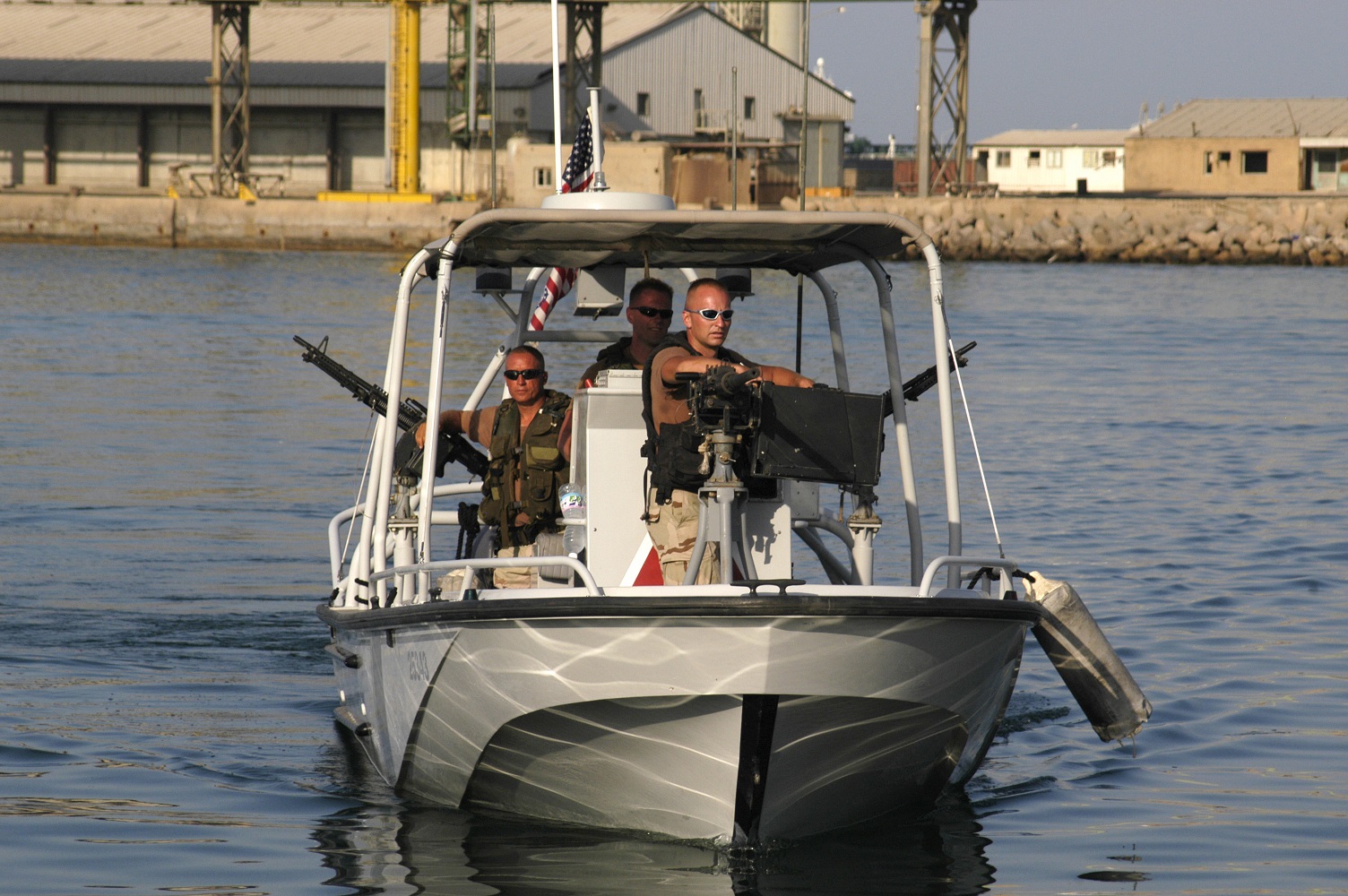 More port security units would follow as the need for these specialized units increased in the theater of operations. On Feb 17, Tacoma, Washington-based PSU 313 out-loaded from McCord Air Force Base and began its journey to the Middle East. As with PSU 311, PSU 313 shipped its equipment, boats, vehicles and ammunition on board cargo aircraft, while the personnel flew aboard chartered jets. PSU 313 arrived in Kuwait at the same time as 311 and received orders to set-up operations at the Kuwaiti commercial port of Ash Shuaybah.
More port security units would follow as the need for these specialized units increased in the theater of operations. On Feb 17, Tacoma, Washington-based PSU 313 out-loaded from McCord Air Force Base and began its journey to the Middle East. As with PSU 311, PSU 313 shipped its equipment, boats, vehicles and ammunition on board cargo aircraft, while the personnel flew aboard chartered jets. PSU 313 arrived in Kuwait at the same time as 311 and received orders to set-up operations at the Kuwaiti commercial port of Ash Shuaybah.
The Coast Guard’s Atlantic Area (LANTAREA) assigned one of its PSUs to support OIF operations in the Mediterranean. In late January 2003, Port Clinton, Ohio’s PSU 309 received orders fo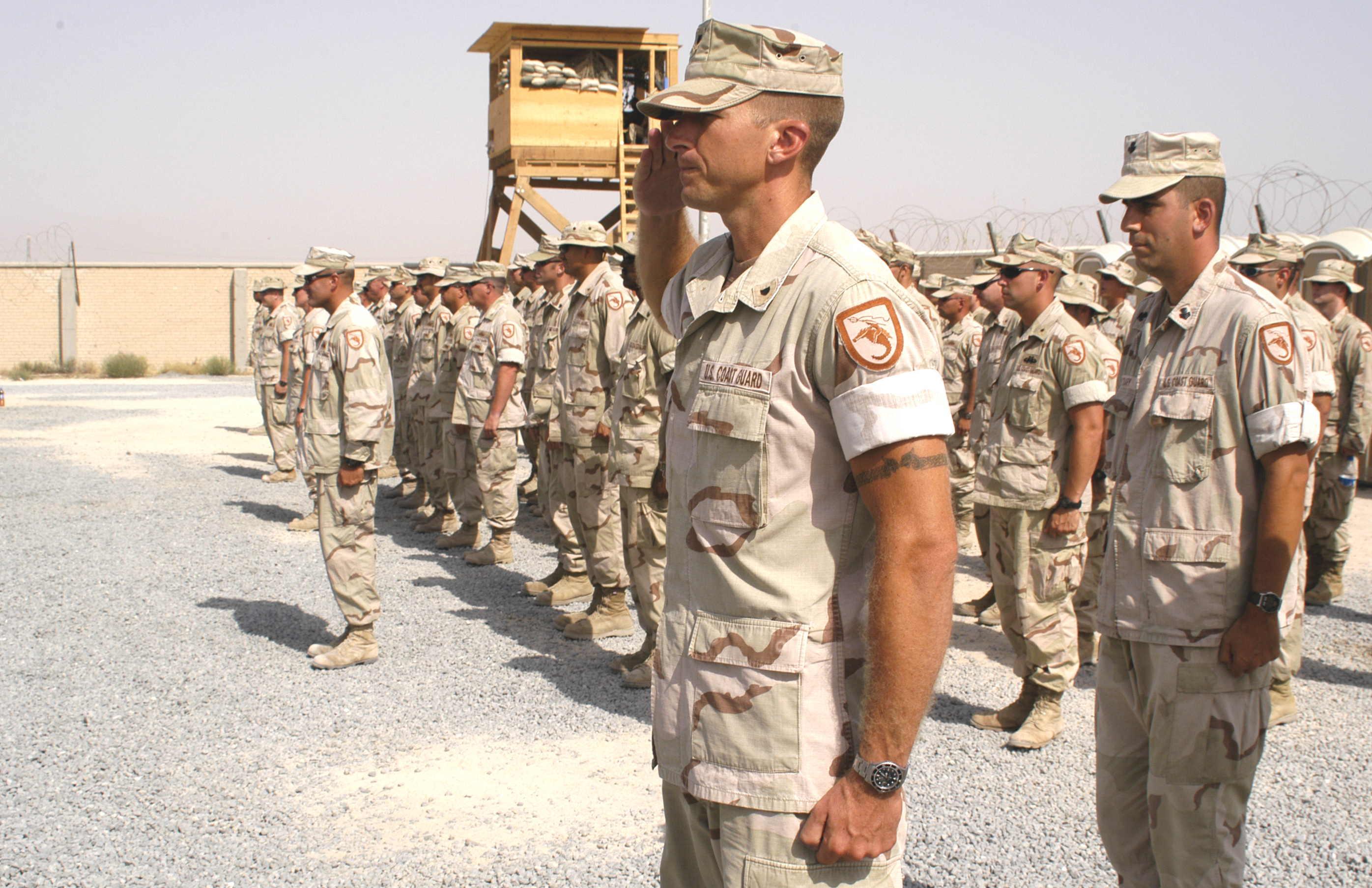 r deployment, and, on Feb. 5, it began an epic journey that included several different aircraft with stops in Kentucky, North Carolina, and Ireland before arriving at Sigonella Naval Air Station in Sicily, Italy. After it arrived in Sicily, PSU 309 prepared to maintain security for a NATO pier facility in Augusta Bay, where inbound Coast Guard patrol cutters would berth. 309’s operational status remained on hold temporarily, but by the end of February its members and assets had arrived in the theater of operations.
r deployment, and, on Feb. 5, it began an epic journey that included several different aircraft with stops in Kentucky, North Carolina, and Ireland before arriving at Sigonella Naval Air Station in Sicily, Italy. After it arrived in Sicily, PSU 309 prepared to maintain security for a NATO pier facility in Augusta Bay, where inbound Coast Guard patrol cutters would berth. 309’s operational status remained on hold temporarily, but by the end of February its members and assets had arrived in the theater of operations.
At 8:00 p.m., in the evening of March 19, Coalition forces initiated Operation Iraqi Freedom combat operations with the launch of Tomahawk Missiles against specific targets in Baghdad. Coalition naval units began operations early the next morning. An amphibious force composed largely of British Royal Marines initiated an amphibious assault against Iraqi defenses on the Al Faw Peninsula, the location of many Iraqi oil facilities. These landings would represent the largest amphibious operation of its kind carried out since the Korean War. Before these amphibious operations could begin, however, Coalition forces had to secure the Iraqi gas and oil platforms of Khor al-Amaya Oil Terminal (KAAOT) and Mina al Bakr Oil Terminal (MABOT). Coalition forces collectively termed these gas and oil platforms as “GOPLATs.”
The mission to capture the 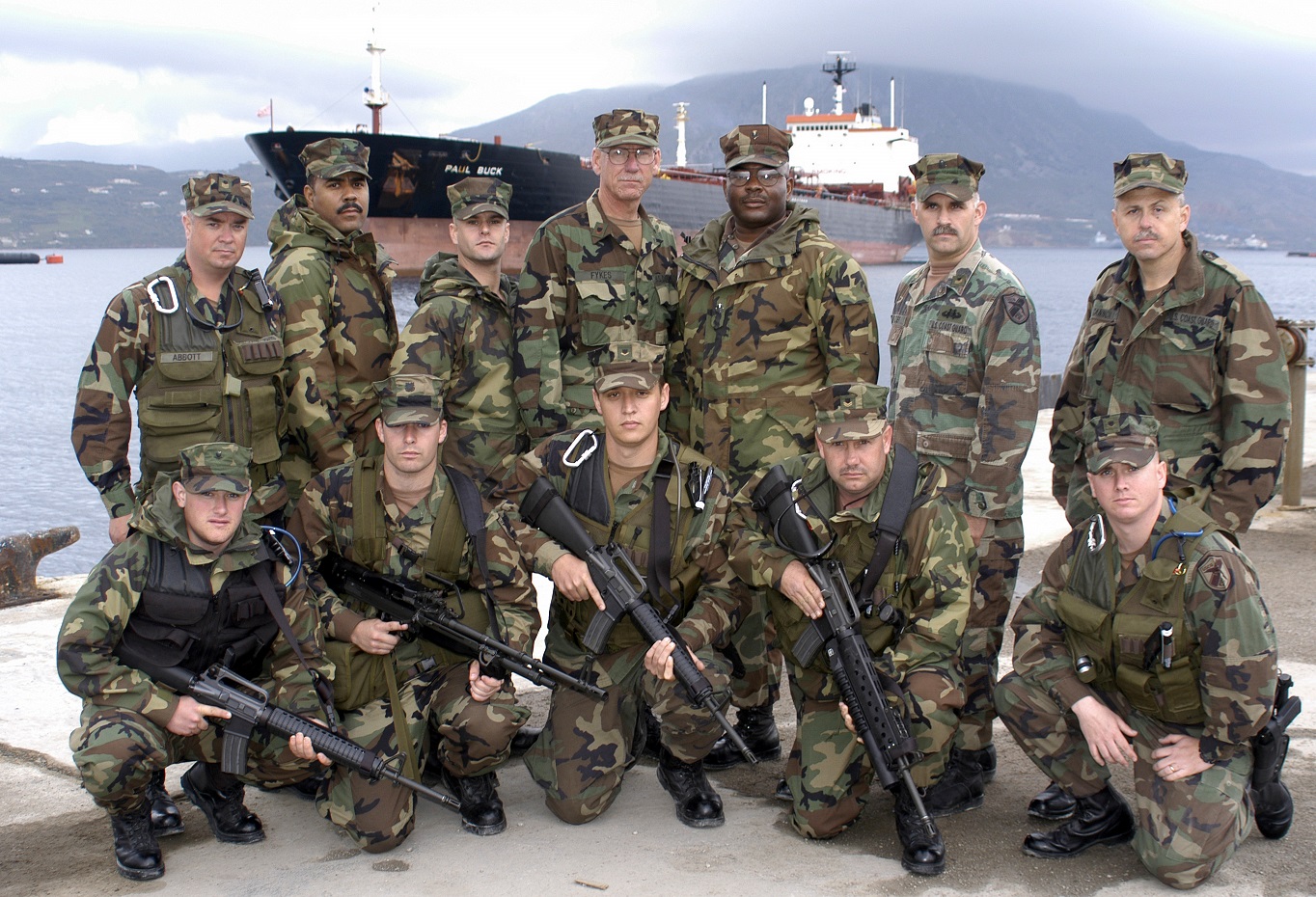 GOPLATs had been planned well in advance. While the typical mission of a Coast Guard PSU is to secure port facilities, NCWG One chose to use the port security units to hold the oil terminals, thereby freeing up SEALs and Marine Corps units for combat operations. After the terminals had been cleared of Iraqi troops, explosives, and weapons, PSUs 311 and 313 arrived to take control of the facilities. The port security unit crews boarded eight twenty-five-foot security boats and set out from the Kuwait Naval Base (KNB) an hour after SEAL assault forces h
GOPLATs had been planned well in advance. While the typical mission of a Coast Guard PSU is to secure port facilities, NCWG One chose to use the port security units to hold the oil terminals, thereby freeing up SEALs and Marine Corps units for combat operations. After the terminals had been cleared of Iraqi troops, explosives, and weapons, PSUs 311 and 313 arrived to take control of the facilities. The port security unit crews boarded eight twenty-five-foot security boats and set out from the Kuwait Naval Base (KNB) an hour after SEAL assault forces h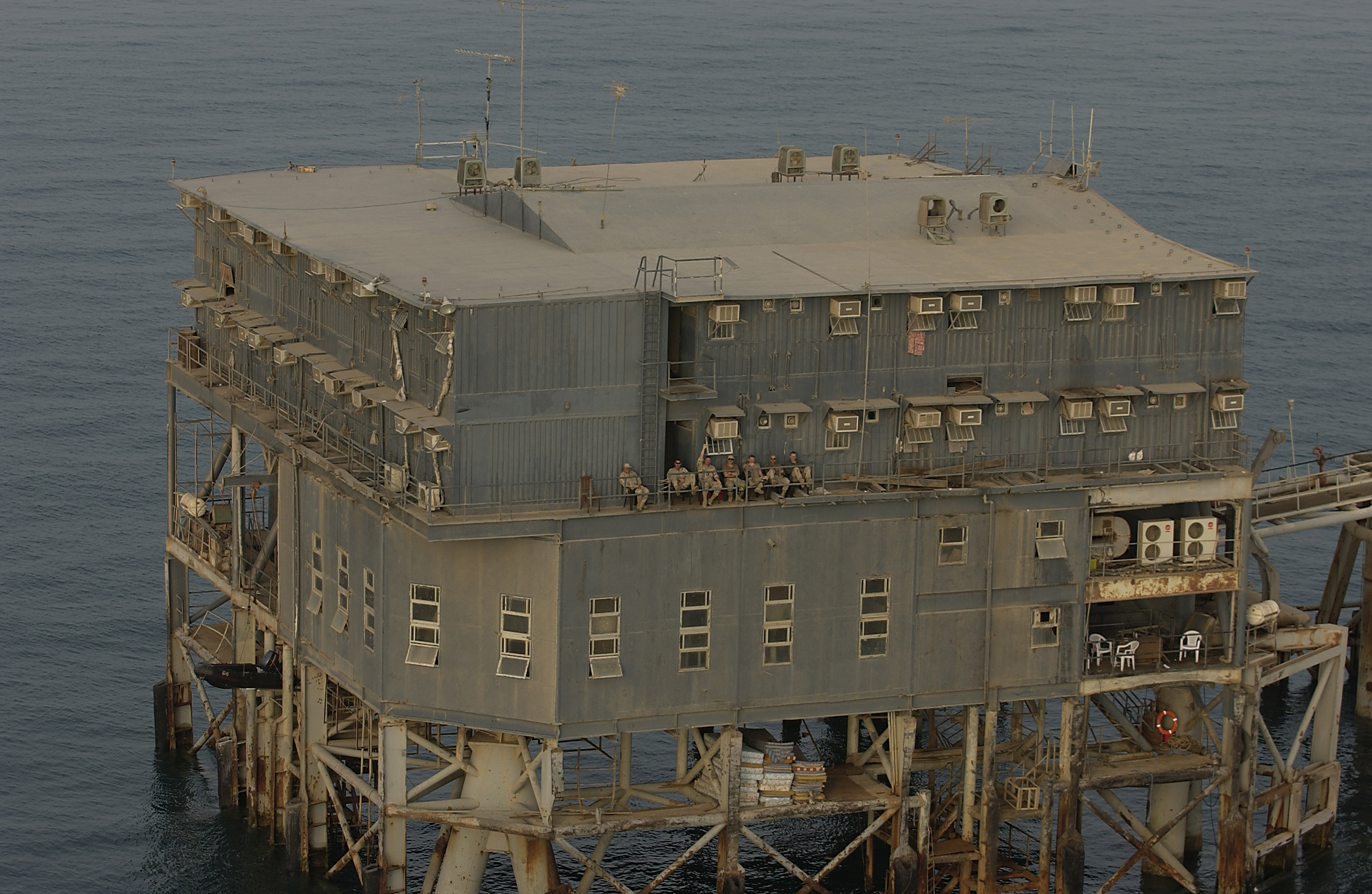 ad secured the GOPLATs. During the passage, the PSU boats met the U.S. Army’s large landing craft Mechanicsville and formed up in close formation near it to complete their transit to the oil facilities. Mechanicsville stopped first at KAAOT to deploy PSU 311 members and its boats and to on-load KAAOT’s Iraqi army prisoners. Next, the landing craft steamed to MABOT to deploy PSU 313 members and equipment and take on board MABOT’s prisoners.
ad secured the GOPLATs. During the passage, the PSU boats met the U.S. Army’s large landing craft Mechanicsville and formed up in close formation near it to complete their transit to the oil facilities. Mechanicsville stopped first at KAAOT to deploy PSU 311 members and its boats and to on-load KAAOT’s Iraqi army prisoners. Next, the landing craft steamed to MABOT to deploy PSU 313 members and equipment and take on board MABOT’s prisoners.
Before PSU members aboard the GOPLATs established a routine, severe storms rocked the oil terminals. On March 22, just a day after the PSUs arrived aboard the facilities, a storm struck with high seas and gale force winds. At MABOT, a Navy landing craft suffered damage after the storm swept it under the oil terminal, and MABOT’s causeway broke off with the loss of supplies temporarily stacked on it. Moored to MABOT, PSU 313’s 25-foot small boats also began to suffer storm damage, so the boat crews got underway. After navigating the treacherous seas for hours, the exhausted crews realized their boats had run dangerously low on fuel and radioed for assistance. High-endurance Cutter Boutwell and buoy tender Walnut arrived and returned them safely to MABOT. Walnut also retrieved MABOT’s drifting causeway and towed it to KNB. A second storm hit the Norther Persian Gulf a few days later, but it caused less damage to the GOPLATs than the first.
All the deployed p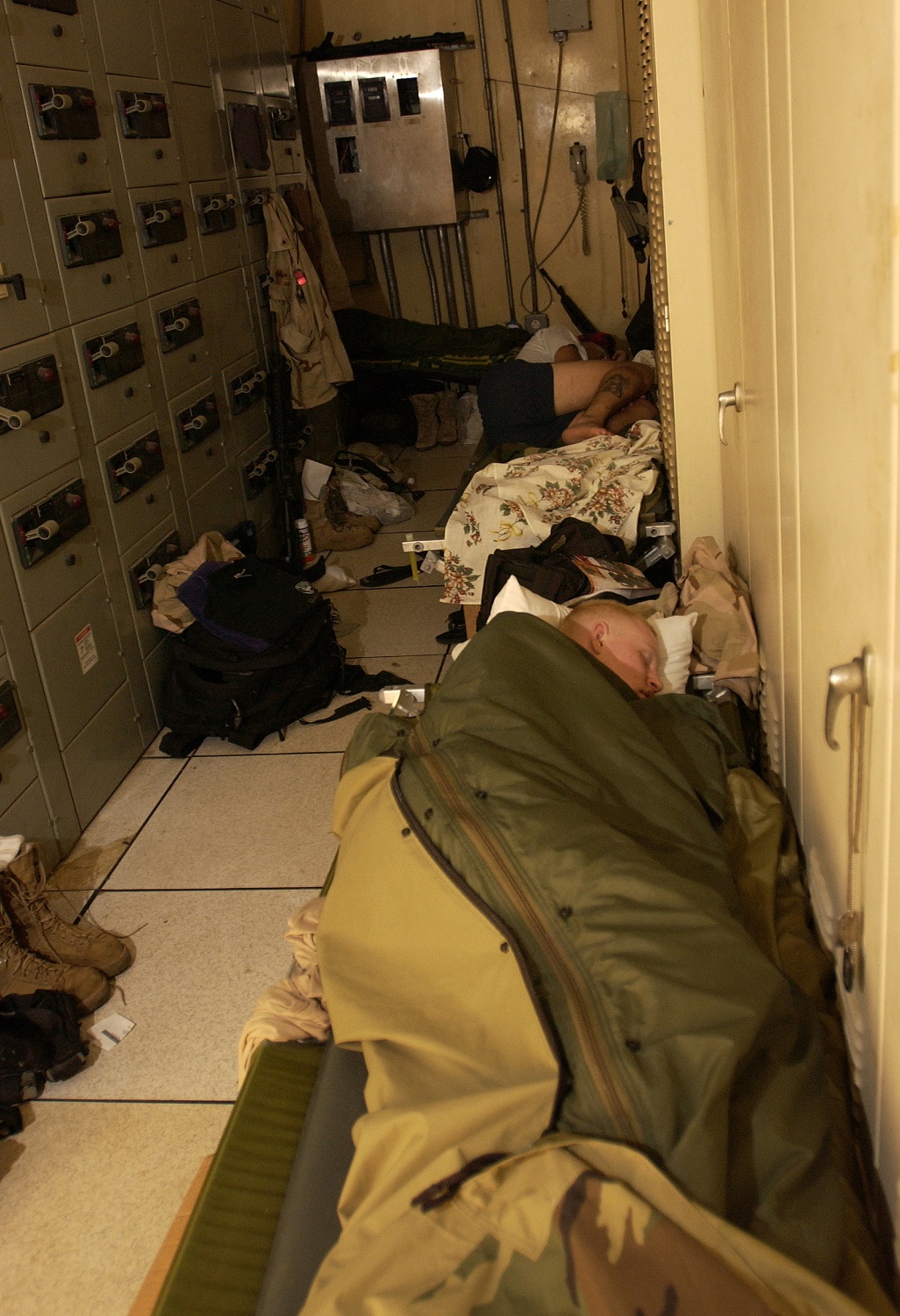 ort security units kept busy. PSU 309 spent March in Italy lining up logistics, and command and control functions, and preparing for operations in other parts of the Mediterranean. 309 also provided force protection for the Coast Guard’s patrol cutters and Navy supply ships docking at Augusta Bay. Meanwhile, most 309 members received four to five hours of training per day. PSU 309 would continue to serve in Italy until mid-April.
ort security units kept busy. PSU 309 spent March in Italy lining up logistics, and command and control functions, and preparing for operations in other parts of the Mediterranean. 309 also provided force protection for the Coast Guard’s patrol cutters and Navy supply ships docking at Augusta Bay. Meanwhile, most 309 members received four to five hours of training per day. PSU 309 would continue to serve in Italy until mid-April.
Back at the GOPLATs, PSUs 311 and 313 members tried to settle-in to life aboard the oil terminals. The PSU complement for each oil platform represented only half of each unit’s members since half of PSU 311 and half of PSU 313 remained in Kuw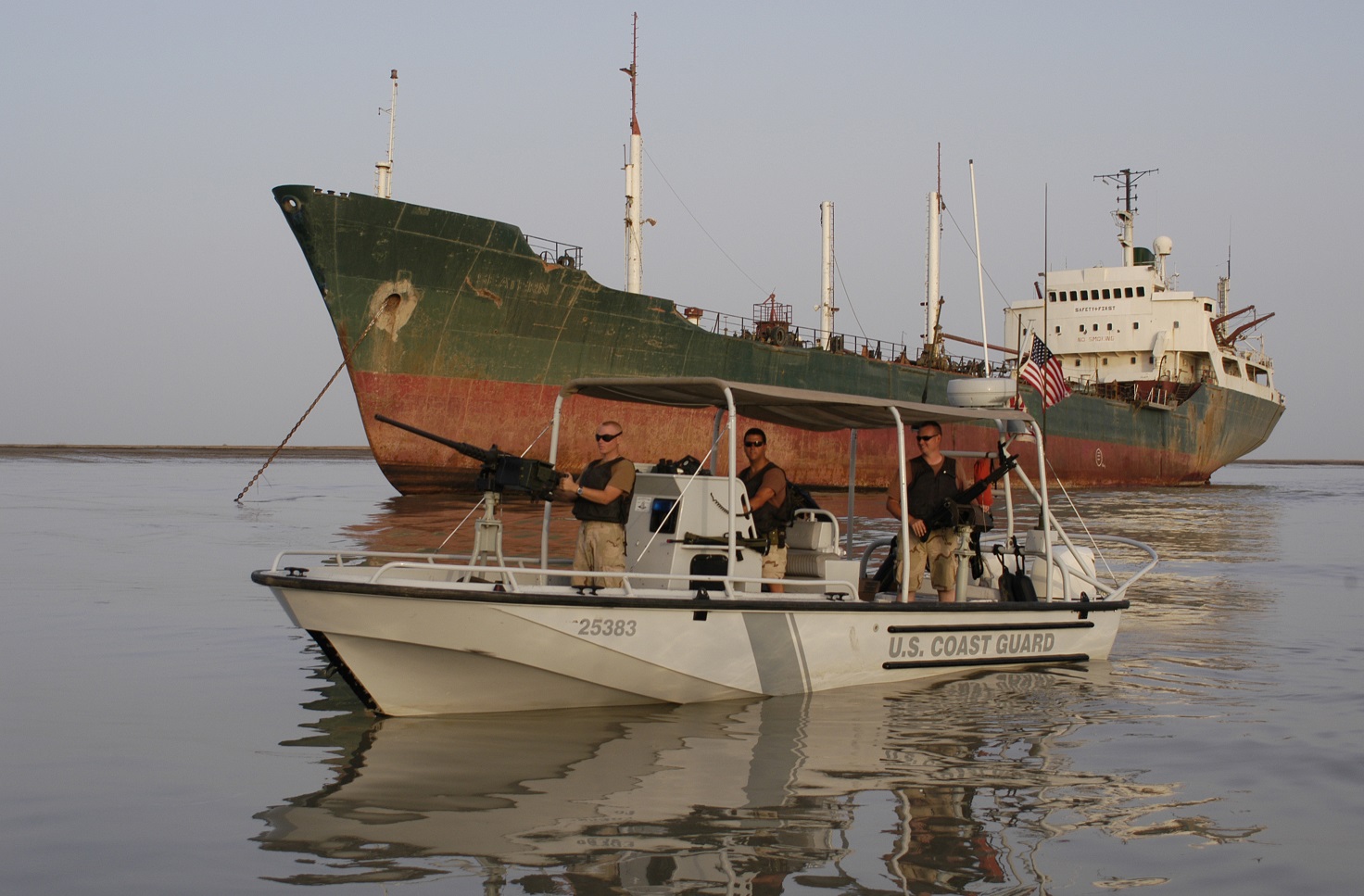 ait guarding their respective port facilities. PSU members on both terminals found the living quarters filthy and rat-infested, so the Coast Guardsmen set up temporary shelters away from the terminal’s sleeping quarters. Over time, living conditions improved as PSU members sanitized the living quarters and brought on-line the repaired facilities. Aboard KAAOT, PSU 311 received a visit from a curious Iranian patrol boat, which approached the terminal and video-taped its Coast Guard inhabitants. Otherwise, life aboard the GOPLATs began to settle into a daily routine.
ait guarding their respective port facilities. PSU members on both terminals found the living quarters filthy and rat-infested, so the Coast Guardsmen set up temporary shelters away from the terminal’s sleeping quarters. Over time, living conditions improved as PSU members sanitized the living quarters and brought on-line the repaired facilities. Aboard KAAOT, PSU 311 received a visit from a curious Iranian patrol boat, which approached the terminal and video-taped its Coast Guard inhabitants. Otherwise, life aboard the GOPLATs began to settle into a daily routine.
Early in the hostilities, Coalition forces captured Iraqi port facilities to allow for the shipment of humanitarian aid and war material. By March 23, units of the U.S. Marine Corps and British military forces had secured the port facilities at Umm Qasr, Iraq. NCWG One re-assigned PSU 311 from its original mission to guard KNB and tasked it with providing port security at Umm Qasr on the Khor Abd Allah Waterway. Meanwhile, members from both PSU 311 and PSU 313 back-filled port security needs at the commercial port at Ash Shuaybah. Those 311 members not already deployed to the oil terminals or Ash Shuaybah prepared to depart the KNB for Umm Qasr.
PSU 311 led the way for Coast Guard land-based personnel into Iraqi territory. On March 24, its members departed KNB towing four trailered 25-foot port security boats. The PSU convoy proceeded north up the main highway past Kuwait City. Coalition fortified positions and Kuwaiti tanks before reaching the United Nations demilitarized zone. The convoy passed through a final border fence, entered the outskirts of Umm Qasr, and headed through the city to the port.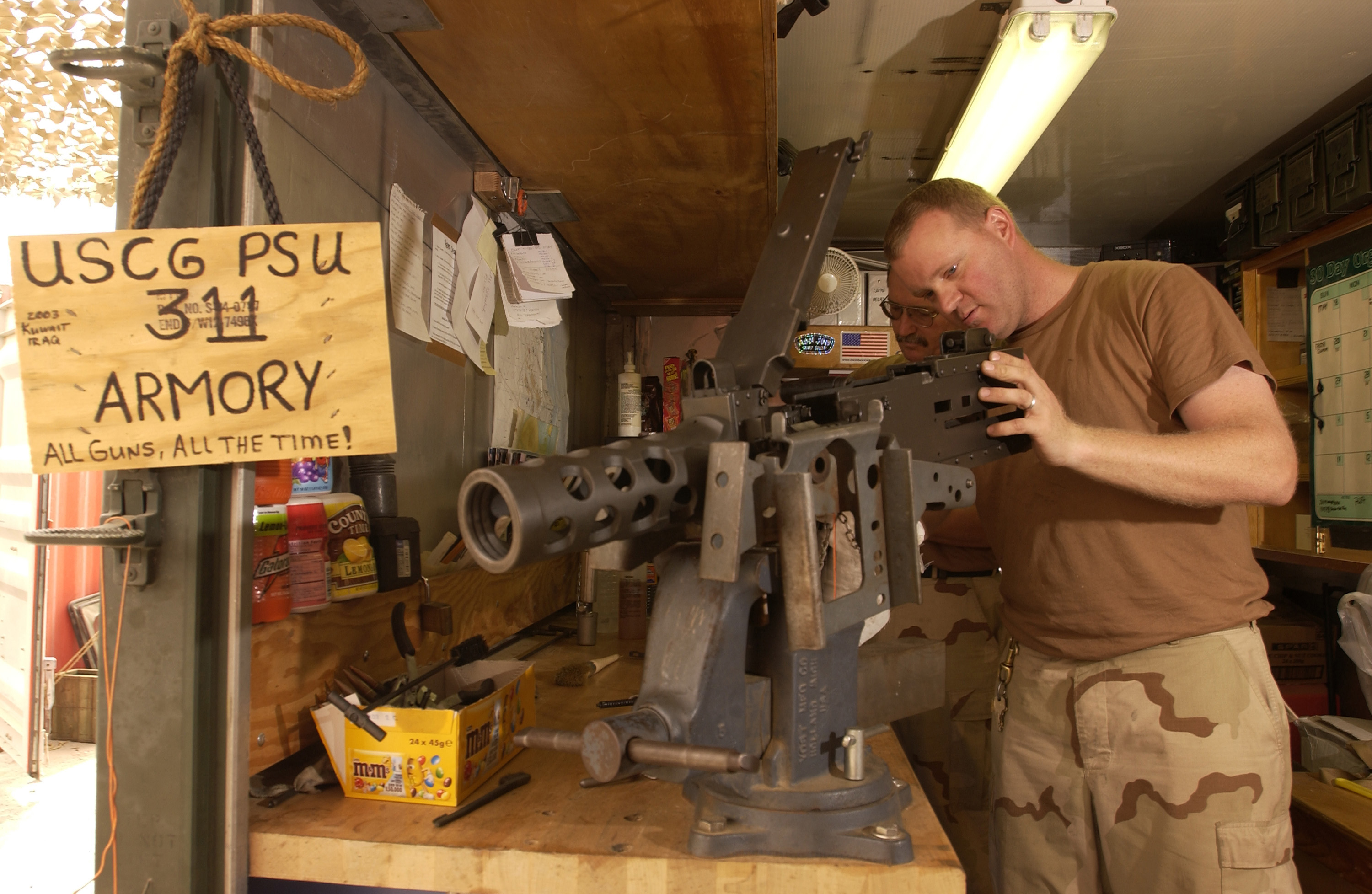
As soon as the PSU 311 convoy reached the port facilities, members of the unit readied the boats for launch, unloaded the vehicles and prepared for operations. While Coalition forces had secured the port earlier, snipers occasionally harass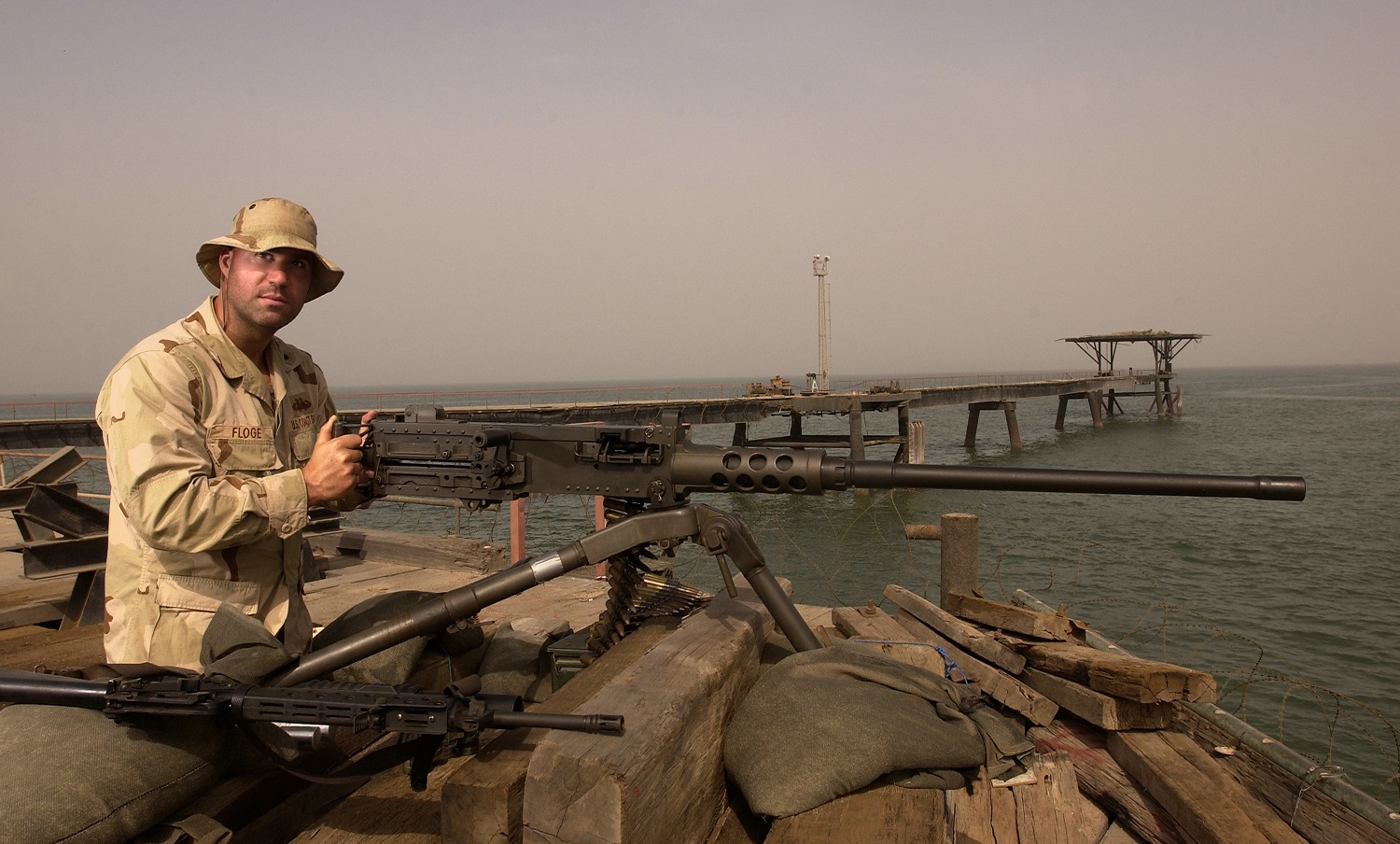 ed military operations and, late in the first day, a rocket propelled grenade landed near the PSU’s new compound. By the end of the day, PSU staff realized they were the first Coast Guard personnel to establish a base of operations on Iraqi soil.
ed military operations and, late in the first day, a rocket propelled grenade landed near the PSU’s new compound. By the end of the day, PSU staff realized they were the first Coast Guard personnel to establish a base of operations on Iraqi soil.
Within very little time, PSU 311’s daily activities developed into a routine. Members moved into air-conditioned tents and installed field showers with solar-heated water bags. A British port operations unit took over control of the port and erected a large galley and dining facility. NCWG One teams set-up early warning sensor positions around the port complex and brought with them an in-shore boat unit. PSU 311 and the NCWG units would remain in Umm Qasr until late May, when Spanish units relieved them and assumed control of port security.
In early spring, some PACAREA units demobilized and returned back to the United States. In mid-April, PSU 309 personnel flew from Italy and arrived at KNB to relieve PSU 313. PSUs 311 and 313 completed their missions on the GOPLATs by early June, so PSU 313 demobilized home Aug. 26. Summer saw the turnover of still more Coast Guard members and units. For example, in August, Gulfport, Mississippi’s PSU 308 arrived to relieve PSU 309 and assume its duties securing Ash Shuaybah.
During OIF, the Coast Guard performed many vital functions, including port security. The PSUs did so efficiently despite the units being divided into three separate port facilities and two oil terminals. PSU 309 demonstrated that Coast Guard units could serve in areas lacking any Coast Guard infrastructure, such as in the Mediterranean. Coast Guard PSUs added an important chapter to the history of the Service and lived up to the Coast Guard’s motto of Semper Paratus, “Always Ready.”
In the News: